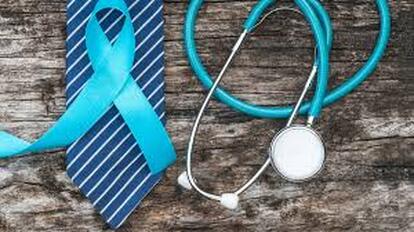 Think about the last time you were in your doctor's waiting room. Who did you see there? Chances are you probably noticed the usual suspects-- nurses, mothers, and children. However, it is likely that you did not see as many men. In healthcare settings across the country, this is an everyday reality. June marks Men's Health Awareness Month, a national campaign that raises awareness about preventable conditions and promotes health and wellness among men and boys. According to research, most doctor visits involve women and children. On average, men are only half as likely to visit doctor's offices, emergency departments (ED), and physician home visits compared to women. Men are also less likely to utilize preventive care, hospice care, and dental care visits[1]. Socialized norms about masculinity impact boys' and men's perception of their health and health behaviors. These norms also influence the beliefs of their family members, friends, and others within their social network. The limited and delayed use of healthcare services can have severe consequences for men's health and wellness. Life expectancy is nearly five years shorter on average, for men than for women, and mortality rates for most leading causes of preventable death are highest among men. These health outcomes impact men's ability to be an involved father, supportive husband, and engaged member of their families and community. "Recognizing and preventing men's health problems is not just a man's issue. Because of its impact on wives, mothers, daughters, and sisters, men's health is truly a family issue.[2]" Throughout June, religious organizations, private businesses, civic organizations, government agencies, fraternities, and others will host events to provide education on men-related health outcomes, prevention strategies, and resources. This month on, encourage men and boys to participate in regular medical checkups and early detection for disease and injury. Support men's disease prevention and wellness by:
For more information on Men's Health, check out: Men's Health Resource Center: www.MensHealthResourceCenter.com Health Profiles of Men and Boys in each state can be found at www.stateofmenshealth.com [1] Pinkhasov RM, Wong J, Kashanian J, et al. Are men shortchanged on health? Perspective on health care utilization and health risk behavior in men and women in the United States. Int J Clin Pract. 2010;64(4):475‐487. doi:10.1111/j.1742-1241.2009.02290.x [2] Congressman Bill Richardson. Dr. Malikah S. Waajid, Ph.D, MPH Dr. Waajid is an epidemiologist and program evaluator with more than 10 years of experience working in community health in the United States and abroad. She is born and raised in Decatur, Georgia.
8 Comments
 The Covid-19 Pandemic has taken the world by surprise. We are being flooded with information regarding its risks, how it can be passed on to others, and where we should and should not go. It feels as if overnight our lives are no longer in our control. That sense of powerlessness can easily increase our anxiety. Anxiety can be described in a variety of ways but it generally feels like an uncontrollable nervousness that makes it challenging to be at ease. Its side effects can be displayed not only through mood and behavior but also affect your heart rate and can have a negative impact on your health. Although we are currently in an uncertain time there are ways to manage that uneasy edge. Here are 5 ways to manage your anxiety while at home:
Maryam Miller DSNPMaryam Miller is an Atlanta native who currently resides in Decatur Ga with her husband and two children. She received her bachelors in psychology and Masters in Community Counseling. She believes in the value of hard work while recognizing the importance of setting boundaries and managing life’s stressors. 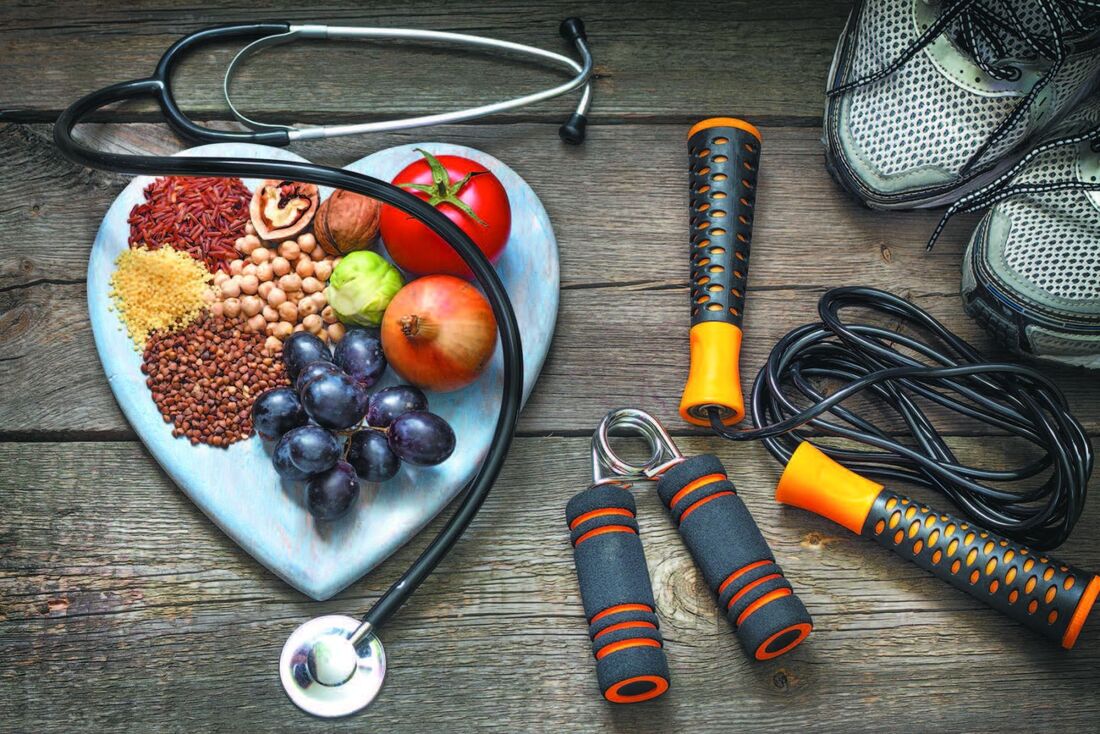 By Khadijah Roberts My intentions is to be a reminder to others as well as to myself is to put our trust in Allaah (Tawakkul) in all circumstances. Obey Allaah and follow the ways of our beloved prophet Muhammad May The Peace and Blessings Be Upon him Aameen. Alhamdulillah we have been guided and directed in all circumstances through Quran and Sunnah gifted with the salaah, duas, fasting, eating habits, how to sleep, purification etc; All forms of wellness to hold on to. Wellness is now a priority for most people as well as awareness mode; which is a good thing. Alhamdulillah! Allaah created us with a priceless body that has built-in fighting soldiers the commander and chief is the Immune System. The Immune System protects the body against disease or foreign damaging substances. Once upon a time our food was a lot more nutritious. Due to the depleting of the soil the food we eat is not the same. A healthy diet and lifestyle is so important. Supplements in this day and time is a must have. Also support your Immune System with probiotic rich foods. Probiotics support a healthy gut and gut health is directly tied to Immune System health. Did you know that 70% and 80% of the body’s immune cells are housed in the gut? Drink plenty of clean water(not contained in toxic plastic bottles). Sleep is vital! Lack of sleep can weaken your Immune System. Exercise or do some type of body movements or brisk walks is an important role. In my opinion another supplement that I don’t go without is certified pure therapeutic essential oils. At times we may have immune challenges but keep maintaining your Wellness Lifestyle. As for those who have not; this is a Wake Up Call. It’s nothing to fear but to be aware and know that we should be doing or at least striving to do most of the things mentioned regardless of any circumstances. So with awareness take action by washing your hands frequently. Be aware of not touching your face towards your mouth without sanitizing your hands. Sanitize your work and home environment. Cover your mouth when you cough and sneeze with tissue or into your upper sleeve if you don’t have tissue. Be mindful not to spread germs. I truly hope this was a benefit! Disclamer: It’s important to keep in mind my role as a health coach is only to guide and mentor. The goal in mind is to coach a positive wellness lifestyle. All information provided is intended for educational and informational purposes only and can not take the place of professional medical advice, diagnosis, or treatment from a licensed or registered practitioner. No information provided has been evaluated by the Food and Drug Administration and is not intended to diagnose, treat, cure, or prevent any disease, or to be considered medical or psychological advice. I assume no liability! Khadijah Roberts, HC A dose for the Soul: “Put Your Trust in Allaah and Throughout your day make Dua!" May Allaah grant us good health and protect us from harm Allahumma Ameen sali ala Muhammad Aameen!!! Khadijah RobertsMy name is Khadijah Roberts I’m a mother of 10 children 24 grandchildren born and raised in Cleveland, Ohio I currently reside in Stone Mountain Ga... Family Life is my life and with a large family I found ways to work from home I’ve been working from home for over 20yrs only worked outside of my home a few times in 2012 I decided to get my certification as a health coach which led me into aromatherapy as of now I have added financial skills of obtaining assets to sum up what I do is health and wealth solutions You can find out more at www.khadijahroberts.com 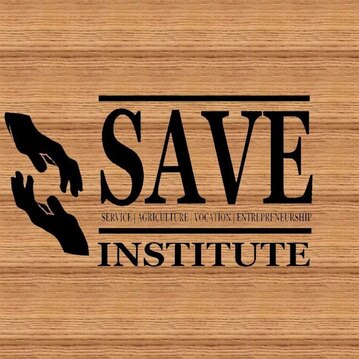 By Atiba Jones Only 59% of black males graduate public high school in this nation And only 17% go on to earn Bachelor’s Degrees, is the reality of the situation And even blacks with degrees, statistically earn far less than their uneducated white counterparts throughout their career’s duration So it’s no wonder why African-Americans are far more likely to end up on probation And consistently have the highest percentages in prison AKA the new plantation Yes, we’ve come a long way, but I believe there’s still need for a lot more salvation What happens to the other 41% of black males who didn’t complete high school? What happens to the other 83% without a Bachelors to use as a tool? Are they to just be forgotten about as if the problem is merely minuscule? Our educational system has failed them, and no, it’s not cool It’s time for an alternative system that goes beyond the surface It’s time to interrupt their cycles of poverty, crime, incarceration and lack of purpose It’s time for our youth to be exposed to agriculture, vocational trades, entrepreneurship and humanitarian service The art of service has been used for centuries as a tool for character development and spiritual training It instills humility, gratitude and decreases complaining It rids one of arrogance & hypocrisy and leaves nothing but purity remaining It focuses one on benefiting others rather than seeking that which is merely entertaining And the beauty of agriculture is that it reconnects us with nature and our natural state It helps us to understand where the food comes from that ends up on our plate It helps us to experience, through our hands, what God can Create And it allows us to feed our communities healthy foods from what we collectively cultivate Over the past few decades, from high schools we’ve seen vocational education gradually disappear “You have to go to college” is all that we’ve begun to hear And perceptions of inferiority from not having a degree has become a real fear While many tradesman earn far more than the average college graduate per year So why is it made to seem as if the only options are either college or the street? With the only exception being the possibility of becoming a professional athlete Or maybe you can make it by learning how to rap some destructive lyrics to a beat Presenting these as the only options is blatant deceit There is absolutely nothing wrong with going to college, however, it’s not the only way to economically compete And if you don’t have a degree, there’s no need to feel as if you’re somehow incomplete And besides this, entrepreneurs are consistently the wealthiest people on Earth And they create situations for children to inherit enterprises at birth Beyond money, entrepreneurship helps one to discover their true worth It shows you that you can build and lead You can create jobs for those in need But the key is to not fall into the trap of arrogance or greed Because the objective is to save ourselves so that we can save our families and others So that we can uplift our sisters and inspire our brothers Provide hope and support for all the single mothers So this is not just about some economic or material pursuit It’s about radically changing the trajectory of the poor and destitute Providing a new career path for the dope boy and the prostitute Snatching up misguided youth from out of the streets and showing them that there’s a different route And this, my brothers and sisters, has sparked the coming of SAVE Institute Atiba JonesAtiba Jones is the director of the SAVE Institute and former founding director of the Risala Institute. He has been a community activist in the Atlanta area for over 15 years.  The number of COVID-19 cases continues to rise dramatically within the U.S., indicating that the disease is more contagious and spreads more quickly than the seasonal flu. Although anyone can become infected, high-risk groups such as the elderly and those with chronic medical conditions are more greatly impacted. With an estimated 10% to 20% of cases experiencing severe symptoms, hospitals and healthcare staff run the risk of becoming overburdened and not able to provide adequate care for those who need it most. Add to this scenario the fact that the novel coronavirus appears to have a considerably higher mortality rate than the seasonal flu and that there is no vaccine or proven treatment at this point, then it becomes imperative that preventive measures are utilized to slow down its spread. The burden of doing this falls not only on the shoulders of the government and public health professionals, but on the general population as well. The good news is that the average person can help to significantly curb the spread of this disease by proactively engaging in social distancing. Social distancing may be the word of the moment, yet its meaning and actual implementation might still be vague for some people. Put simply, it is the public health practice of maintaining a physical distance between people in order to prevent the transmission of disease. On a personal level, it involves staying at home as much as possible and avoiding crowds and large gatherings. In the case of COVID-19, an infected person can remain asymptomatic for up to 2 weeks, potentially exposing countless others to infection. However, if this same person has been practicing social distancing, then this can significantly lower those opportunities for passing on the virus. Certain lifestyle adjustments should be made in order to practice social distancing at this time. Those who can work from home should do so and shopping trips to get essentials should be strategic so that they are limited in frequency and duration. If one does encounter another person, say during a weekly grocery run, then experts recommend keeping a safe distance of 6 ft. from each other. For those whose jobs are considered essential and cannot work from home, effort can still be made on a personal level to keep a safe distance from others in any environment. In addition, frequent and thorough handwashing should be coupled with social distancing for maximum benefit. All of this is done regardless of infection status, in order to reduce the opportunities for exposure. Those who do become exposed to COVID-19, for example through contact with an infected individual or recent travel, will have to quarantine themselves using stricter isolation measures. Social distancing is a public health practice that involves the community making some behavioral changes and sacrificing in order to curb the spread of disease. In the case of the COVID-19 pandemic, it is the primary tool available to protect ourselves from this dangerous virus right now. And at a time when the situation may seem overwhelming, it gives people the power to make a difference for themselves, their loved ones, and the greater community. Rizwana Khan MSPHI have a Masters of Science in Public Health with a focus in Epidemiology. I worked as a Statistician and Data Analyst for several years at the CDC and other research institutions. Currently I am a math teacher at a private high school. 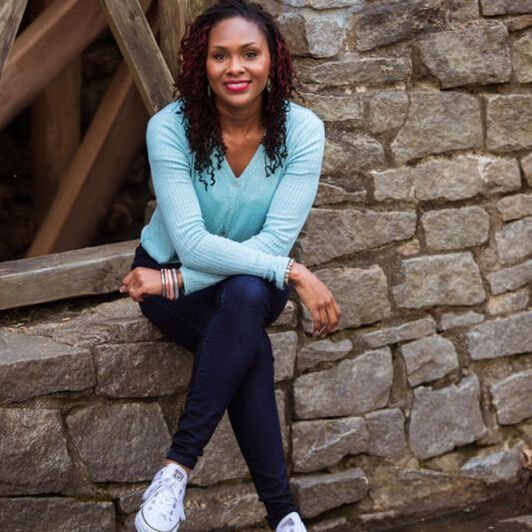 By Coach Najwa As there is an airborne illness creeping it’s way around the world, there’s also a change coming about. There are also babies being born, accomplishments being made and ultimately, life to live. Here in the states, we have the blessing of entering into a new season: Spring. Spring is a time to newness. It is a time for us to focus on what we’d like to grow. Would we like to grow in fear or grow in peace? The Creator of all things has given us the ability to choose. Let’s make that choice wisely… Choosing to grow in peace could look a little something like this: Establishing a morning practice of prayer, meditation and gratitude, journaling to set the tone for your day. These practices connect you to The Creator of all things and align you with similar universal energy. We could pray and meditate for peace, protection and healing. We count our blessings from the clothes on our backs to the food on our tables. We journal to get clear on what’s going through our minds so that we can process it with our hearts. The Spring is a wonderful time to “awaken” our physical bodies from the season of winter and give our organs some rejuvenation! Doing an internal cleanse and resetting your diet with fresh fruits and vegetables allows you to heal from the inside out. Be sure to consult your doctor before starting any new supplement regimen. Our bodies use the food we eat as fuel. Being mindful about what the fuel is, helps us to maintain physical peace when we need it most. Not to mention the benefits of boosting our immune systems to be strong against Covid-19 and any other virus out there. As we embark upon a journey of peace during a time of panic, it is important to remember that there will be times where you may feel the emotions of the world and need to process that as well. After all, we are all connected and thrive in community. Check in with yourself daily on a mental, emotional, spiritual and physical level and ask “What do I need today?” It may seem strange at first but asking this question and sitting quietly to receive the answer opens you to caring for yourself in a holistic manner. And don’t hesitate to act on what comes up and give that to yourself. You deserve it! If we can get our entire family onboard with cultivating peace - Mind, Body and Spirit - I believe we could see a beautiful and much needed shift in our health and the health of those around us. Najwa is a Life Coach, Health Coach and Personal Trainer specializing in helping women release overwhelm and cultivate a life they truly love. As a working woman with a family, she understands the toll “doing it all” can take and have created a system to help others manage that and still feel like they are reaching their dreams and goals. Najwa AhmedCoach Najwa is a Life Coach, Health Coach, Personal Trainer and Sensual Dance Instructor with a passion for helping women feel and look their best. She has worked with hundreds of women over the last 7 years in helping them boost confidence, lose weight, increase strength and transform their bodies! 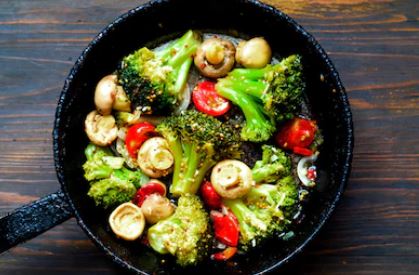 By: YaQutullah Ibraheem MS, RDN, LD Registered Dietitian Nutritionist @yaqutu_nutritionprescriptions While food costs present a very real cost of living challenge for many families, Americans are finding ways to cope and are cutting back on other living expenses including transportation, clothing, recreational and other luxuries. We select food items based on food costs, taste, and preparation convenience. While all of these are important options to consider, none is more important than your long-term health and quality of life. Welcome to the final frontier. The American affinity for that which is quickest, easiest, and least expensive often results in our gravitating towards choices that are not always the healthiest which leads us to high sodium containing canned foods, processed foods high in fat and sugar that we think may be a quick fix for our hunger and that don’t break the bank, but you get what you pay for and you are what you eat. In the long run, quality nutrient content fall by the wayside as out waistlines expand and out blood pressures increase. With the steady rise in food costs of breads, grains and cereals, a 9% increase according to The Consumer Price Index, many Americans are resorting to discount food pantries, food banks, government assistance programs and other options in order to meet their nutrient needs. Meal planning, understanding what to purchase and how to get the most of it is key. Now don’t go and get rid of all of your favorite foods but learn to plan meals and add a bit of creative pizzazz to spice up some of the goods that you have in those cabinets. Here are a few tried and proven ways to maximize nutrient intake while minimizing monthly food costs for families and individuals. Meal Planning When meal planning, several factors come to mind including the number of family members being served, the number of total meals a family consumes at home, frequently purchased items, considerations for work and school lunches and other considerations. Eating breakfast at home can save an average of $900.00 dollars annually. Just think of how much a family of four could save by preparing daily lunches. When purchasing items, label reading is essential in order to get the most nutrition out of items purchased. Key nutrients include Folate, Iron, Vitamin C, Calcium, Vitamin A, protein, saturated fat, and fiber that help with vision, bone growth and development, lean muscle maintenance, brain function, and maintaining good bowel health and regularity. Trans-fats are restructured fat molecules not naturally occurring in nature that have been included in foods in order to increase shelf life and stability. Many items are now Trans fat-free, but when shopping for dairy and other animal products, look for items low in saturated fats, i.e., less than 2 grams per serving. As a general rule, items are a good source of a nutrient if it provides 10% or more of a particular nutrient and is an excellent source if the food item provides 20% or more of a particular nutrient. When it comes to health, quality wins out over quantity. For items that are frequently purchased, a bulk purchase from bulk food clubs including Sams Club, Cosco, BJs, and others, are more cost effective for whole wheat high fiber breads, grains, cereals and other non-perishable dry goods and freezable items. These items can be easily incorporated into prepared lunches and for breakfast at home. Rethink non-essential food items that offer little or no nutritional value such as soft drinks, cookies, candies and other impulse items. Meal Planning and Shopping Tips
Portion Control The average American eats 2-3 times the recommended portion size indicated on a Nutrition Facts Label. Pay attention to portion size and minimize plate waste by being aware of the number of servings in a food package. For example, when preparing meals at home pay attention to the number of servings per food container or package. For grain and cereals items ½ cup for hot cereals and ¾ for cold cereals is considered a serving size. Use this information to plan for the number of meal portions to be served and how many servings you can yield from items purchased. Portion control is also essential to adequate weight management. If dinning out is one of your favorite past times, be aware that the amount of food served is about 3 times the normal recommended portion size. So, don’t feel like you have to devour the entire entrée at one sitting. Eat a bit and save some for later. Snacking It’s natural to snack so why not plan a healthy way to do it? Instead of making multiple trips to the vending machine at work or school, save the change and purchase items including granola bars, yogurt, salt free pretzels, whole fruits, carrot sticks, whole wheat peanut butter crackers, and other healthy items that can be packed and taken with you to school or work. This is a great way to ensure good nutrition while also preventing unbudgeted expenses. Purchasing in Season Fruits and Veggies Using the weekly supermarket sale papers when shopping is a good habit that will help us shop sales and save money on food costs. Purchasing items fruits and vegetable in season such as squash, potatoes and other items in the fall and winter and berries and tropical fruits in summer allows you to save money and get a variety of nutrients throughout the year. Other items including many vegetables may be purchased fresh frozen, stored and used in meals. One way to begin is to know where you stand and make adjustments as necessary. Another way to know how much you spend on groceries is to keep a record of how much your family spends on food for a two-month period. After you collect this information, you can determine how to reduce your monthly food budget. Everyone has to eat, but you can eat healthy and cut budget costs significantly when you plan accordingly. Your healthy is your wealth so invest in it! Follow on IG for more nutrition tips and information @yaqutu_nutritionprescriptions [email protected] |
Don't miss another edition of A Message from Makkah. Click the button below to join our mailing list
Contact Us for Advertising Opportunities!
Archives
January 2023
Categories
All
Our Sponsors |
Makkah International Institute

 RSS Feed
RSS Feed